
Dr Nancy Ntidi,
ARC-Grain Crops, Potchefstroom

Dr Akhona Mbatyoti, ARC-Tropical & Subtropical Crops

Lindokuhle Qwabe, Integrated Pest Management,
North-West University

Prof Driekie Fourie, Integrated Pest Management, North-West University
Maize is an important cereal crop used as a food source for humans and animals in most parts of the world. Global production exceeds 600 million metric tons, with about 60% produced in developing countries.
However, maize production contributes and plays a major role in the build-up of nematode population densities – with more than 60 nematode species known to parasitise the crop. The economically most important nematodes of local maize crops – and those crops used in rotation – are root-knot (Meloidogyne) and lesion (Pratylenchus) nematodes. These two genera commonly occur in maize fields at the same time, causing significant damage to the crops and subsequent yield losses.
Lesion nematode infection correlates with poor growth and yield, and the infected roots present necrotic lesions, which reduce root mass and may eventually destroy the roots. Cereals, including maize, are often mistakenly viewed as poor hosts of root-knot nematodes, likely because of the lack of the typical galling symptoms that Meloidogyne spp. cause, especially where lower population densities of this genus occur. Single or combined populations of M. incognita or M. javanica can, however, seriously affect yields with losses of more than 50% being recorded.
Impact by nematodes
Although nematodes are one of the most widespread and economically important pests of cereal crops globally, non-specific, cryptic disease symptoms and a lack of apparent damage result in these organisms being underestimated in terms of their importance. Symptoms inflicted by nematode pests are regularly misdiagnosed or such symptoms are attributed to other growth-limiting factors such as nutrient deficiency, lack of sufficient rainfall and/or poor soil health.
Nematodes are rarely recognised as major limiting factors until all other constraints on yield increase had been considered and excluded. Various research studies have demonstrated higher levels of fungal and bacterial root rot damage on root and tuber crops when co-infected with nematodes. Nonetheless, in general, knowledge of nematode disease host interactions remains scarce and limited in South African cereal production areas.
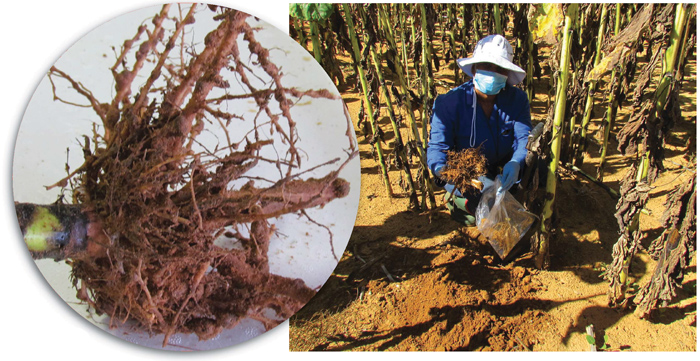
Research on important diseases and pests that adversely affect yields and income of both commercial and developing local producers, are mainly done in isolation for the different disciplines. The current trend of increasing crop production under conservation agriculture practices furthermore accentuates the importance of soilborne diseases and pests, since little is known in this regard. A crop protection survey in partnership with Grain SA commenced during 2018/2019 and aims to investigate the abundance and identification of nematode assemblages occurring in maize under conventional practices in fields of semi-commercial black producers. This article discusses and highlights the plant-parasitic nematodes identified from four provinces (Figure 1) and their importance in order to enable sustainable food production.
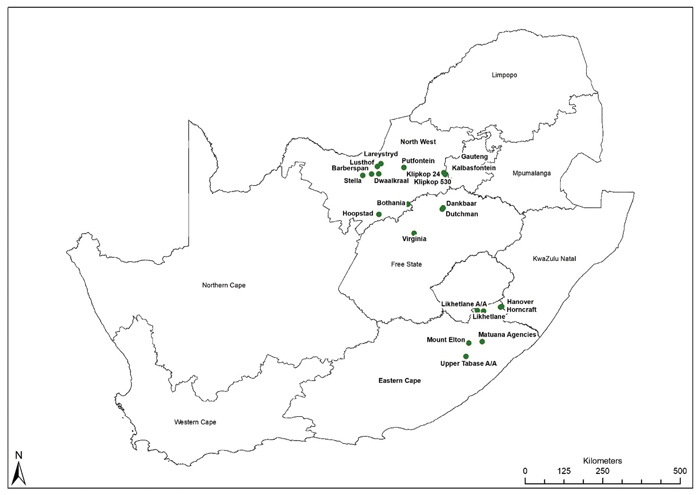
(Map compiled by Wiltrud du Randt: BFAP)
Baseline information has been obtained with regard to the occurrence and abundance of the economically important nematode pests in maize production systems. Plant-parasitic nematode genera and families identified (using morphometrics and morphological characteristics) from soil and root samples from the 22 farms were Belonolaimidae, Criconemidae, Dorylaimidae, Longidoridae, Helicotylenchus, Meloidogyne, Rotylenchulus, Scutellonema and Pratylenchus. Species identified include Meloidogyne enterolobii, M. incognita, M. javanica, Rotylenchulus parvus, Pratylenchus delatrei, P. neglectus, P. zeae and Tylenchorhynchus brevilineatus. Various beneficial nematode genera/families have also been identified, but data will only be finalised later and analysed then to determine their impact as biological indicators of soil health in the fields sampled.
Of the 22 locations sampled the SCAR-PCR analysis of root-knot nematode females revealed that 13 of the locations had single populations, whereas five locations had a mixed population of M. enterolobii in combination with either M. incognita or M. javanica. The species M. incognita was found in 27,8% of the locations sampled, M. javanica in 44,4% and M. enterolobii in 55,6% of the locations. This is in contrast to what was previously found where M. incognita and M. javanica were always the most abundant species.
Results from this study indicate that M. enterolobii was found in more than 50% of the locations and represents important information that will require that control strategies be reviewed and adapted since this species is known to be more pathogenic (Philbrick et al., 2020; Collett et al., 2021). Coinertia analysis furthermore showed that correlations exist between soil physical and chemical parameters and nematodes, with higher percentages sand as well as higher pH values correlating positively with Meloidogyne and Rotylenchulus abundance per 50 g roots, while Helicotylenchus, Rotylenchulus, bacterivores, fungivores and Belonoimidae in the soil were positively correlated with percentage silt, P, NH4 and NO3. With regard to the beneficial nematodes, bacterivores were more abundant than their fungivore counterparts, indicating more enriched conditions in the soil.
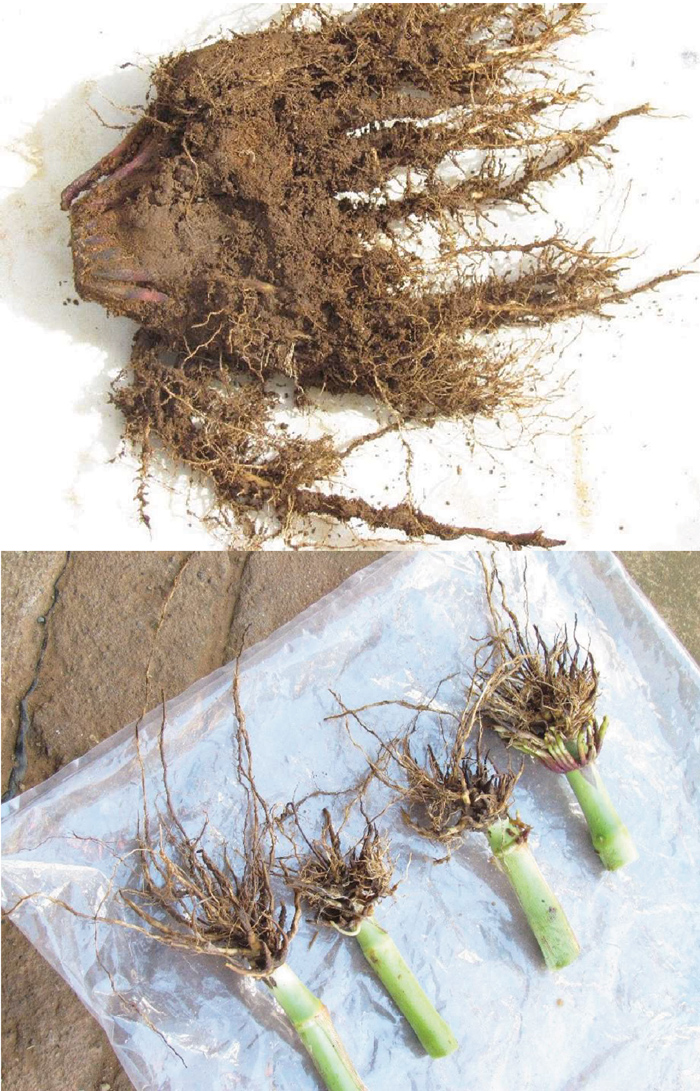
Although the main focus of the study was to investigate the occurrence and abundance of nematode assemblages in maize fields, weeds that grow in such fields acting as alternative hosts for nematode pests were not overlooked. The most commonly abundant weed genera recorded on the 22 farms sampled include, but were not limited to, the genera Cynodon (quick grass), Cypress (nutsedge), Bidens (blackjack), Amaranthus (pigweed), Chenopodium (goosefoot), Datura (thorn apple), Tagetes (khaki weed), Digitaria (crabgrass), Commelina (wandering Jew) and the parasitic weed genus Striga asiatica (witchweed).
There is no doubt that a need exists to increase agricultural efficiency and productivity. In order to address low agricultural productivity and to keep in mind the increase in human populations as well as declining food availability, shifts in attitude and practice have to occur. This is particularly applicable to alternative approaches regarding pest and disease management. There is a need for interaction to be initiated among farming communities (producers) and scientists, agricultural agencies, chemical and seed companies as well as other role-players, since the challenges identified during this study were mainly due to lack of or limited access to information.
Limited information with regard to the health status of soils is a great concern to producers, since it has a direct negative impact on crop production. Also, taking soil samples for nematode and other analyses is still a major challenge that farmers encounter. The abundance or presence of weeds (Photo 1 and Photo 2) throughout the growing season is another concern, because it poses a serious threat to maize production: Weeds have a high potential to support and expedite populations of nematode pests as well as various other economically important diseases.
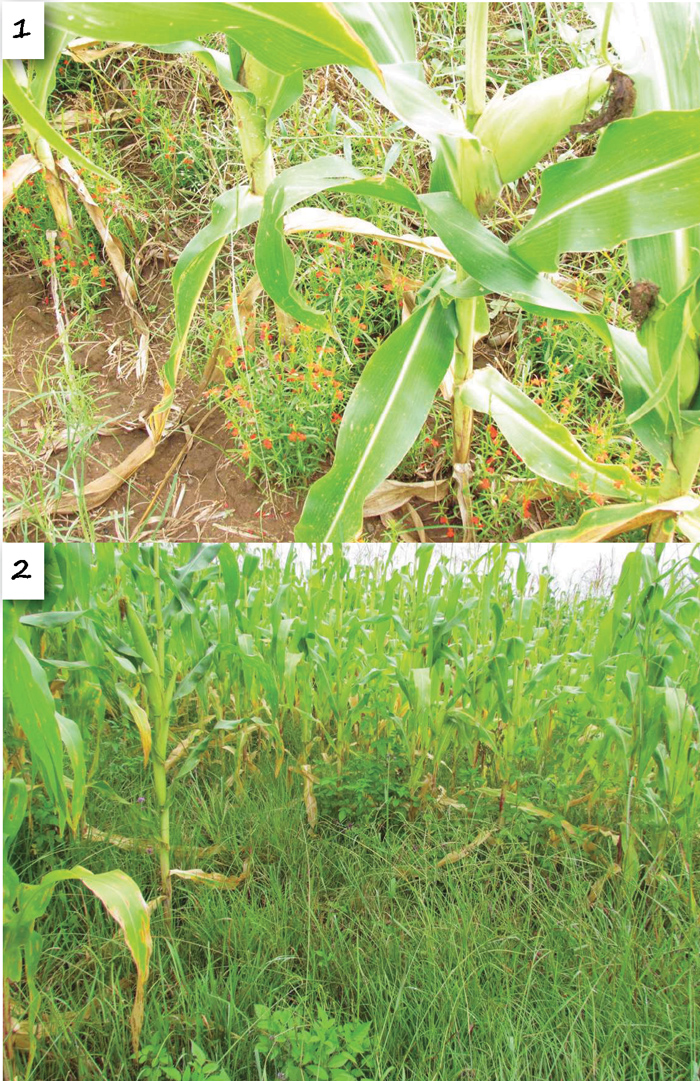
This is particularly true for areas where the presence of nematode pests is overlooked or not considered to be a limiting factor in crop production. Furthermore, herbicide applications are often inaccurate (Photo 3 and Photo 4), resulting in severe yield losses to maize crops. This issue in particular needs to be addressed to avoid unnecessary input costs by producers.
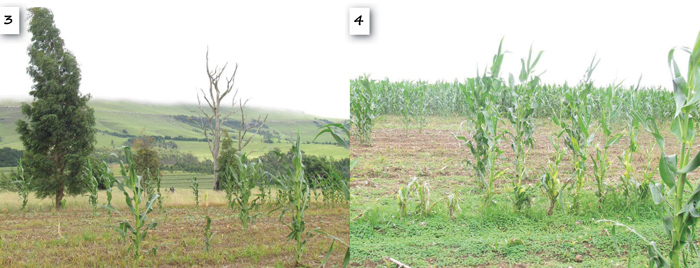
This research study has demonstrated that aspects of the health status of the soils in the maize production areas where nematode samples were taken as well as root and ecosystem restoration need to be exploited further. Such knowledge should be transferred to producers to enable them to sustainably produce their cereal crops in the presence of low nematode pest population densities.
Contact Dr Nancy Ntidi at ntidin@arc.agric.za or 018 299 6100 for further information.





























